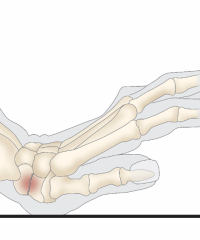What does a hand and wrist surgeon do?
Recent posts
Do you have any doubt?
My goal is to help them regain not only function, but also the quality of life they deserve. If you are experiencing pain, movement limitations or injuries to your hands, I am here to offer you my experience in the field. Together, we can chart a path to recovery and restoration of vitality to your hands.
Categories
Hands are, without a doubt, one of the most important parts of our body since they facilitate us to carry out many activities and daily tasks that would be really complicated to carry out or not possible at all if we did not have them. Therefore, they are one of the parts of the body that we use the most, hence, they can suffer from multiple ailments, accidents or pathologies.

The wrist is a joint that has the objective of joining the hand with the forearm, specifically joining the radius and ulna bone with the carpus. The wrist has a total of 8 small bones (carpal bones) and 2 long bones in the forearm (radius and ulna). In the same way, the wrist, besides joining the hand with the forearm, allows its mobility (flexion, extension, radial inclination, ulnar inclination and circumduction).
What does a hand and wrist surgeon study?
A hand and wrist surgeon, besides being a general practitioner, must have a specialization in orthopedics and traumatology, a specialty that studies, diagnoses and treats diseases of the musculoskeletal system, which includes bones, muscles, tendons, joints and associated structures. In addition, a hand and wrist surgeon has a sound knowledge and has studied in depth and in detail the anatomy and functionality of these two parts of the body.
What does a hand and wrist surgeon do?
It specializes in the care and treatment of all kinds of ailments, fractures and injuries in these two parts of the body. In addition, it treats each and every one of the joints that conform them and that allow different movements and actions of both the working life and everyday life.
Furthermore, within the subspecialties of hand and wrist surgery, there is the arthroscopic surgery, a totally innovative surgical procedure, which consists of making small incisions in the wrist, thus avoiding damage to other important anatomical structures. Arthroscopy is also a technique that offers many advantages and benefits to the patient, therefore it is widely used for the reduction of wrist fractures (distal radius or of some the carpal bones), ligament repair, resection of masses such as ganglions or gums, or for treatments for wear and tear of the joint (wrist osteoarthritis). See the article Wrist Arthroscopy.
When a hand and wrist surgeon should be consulted?
- Pain in the hand or fingers.
- Having a hand trauma.
- Deformity or masses in the hand.
- Sensation of a cramp.
- Inflammation without improvement.
- Limitation to carry out any movement or load with the hand.











